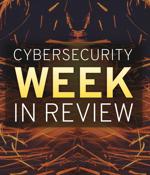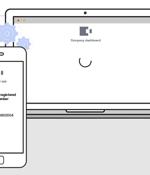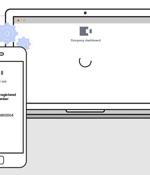Security News

Zero Trust deployment - moving all your apps and data to the cloud and assuming no user or device is trustworthy until proven otherwise in order to gain access - has been rapidly introduced as a result of the pandemic. Most attempts at achieving Zero Trust access today are a patchwork of disparate products from different vendors connected to virtual private networks, with rudimentary on-off access controls based on limited visibility.

Last year's sudden transition has created numerous cybersecurity challenges for businesses as they attempt to adjust to this new way of working. Some of the new security challenges - both for employees and employers - include BYOD policies, sharing the same network with relatives or roommates, using the same devices for work and personal activities, VPN security issues and, of course, working from home with more distractions in our personal lives.

Vulnerabilities allow attackers to remotely deactivate home security systemA DiY home security system sold to families and businesses across the US sports two vulnerabilities that, while not critical, "Are trivially easy to exploit by motivated attackers who already have some knowledge of the target," Rapid7 warns. Cyber threats, passenger vessels and superyachts: The current state of playIn this interview with Help Net Security, Peter Broadhurst, Maritime Senior VP Safety, Security, Yachting and Passenger, Inmarsat, talks about the impact of cyber threats on passenger vessels and superyachts, and provides an inside look at maritime cybersecurity today.

In this interview with Help Net Security, Chris Christou, Vice President at Booz Allen Hamilton, talks about evolving 5G security issues, leveraging zero trust, as well as implementing 5G security. How can organizations leverage zero trust to enable a better response to new security challenges as 5G rolls out?

98 percent of UK business leaders and IT decision makers either plan to or have already started implementing zero trust strategies at their organizations, according to Illumio. The report also revealed the challenges organizations face when implementing zero trust architecture.

As companies nudge their staff to return to communal workspaces, many workers don't actually want to - more than 50 percent of employees would rather quit, according to research by EY. While HR teams worry over the hearts and minds of staff, IT security professionals have a different battle plan to draft - how to make the new normal of the hybrid workplace secure. In a hybrid workplace, a Zero Trust strategy means ever-tightening security.

As companies nudge their staff to return to communal workspaces, many workers don't actually want to - more than 50 percent of employees would rather quit, according to research by EY. While HR teams worry over the hearts and minds of staff, IT security professionals have a different battle plan to draft - how to make the new normal of the hybrid workplace secure. In a hybrid workplace, a Zero Trust strategy means ever-tightening security.

With zero trust network access, security software based on AI algorithms continuously monitors user and endpoint device behavior, checking for deviations from defined rules and historical behavior patterns. The first step in zero trust network access is to continually verify the user's identity, ideally by applying multi-factor authentication via hardware tokens or soft-token apps.

The zero-trust model prevents attacks, but also greatly limits the impact of a successful breach, such as a ransomware attack.

How smooth this implementation goes boils down to one critical component - a strong partnership with the IT team. Security teams cannot deploy elements of zero trust on their own.